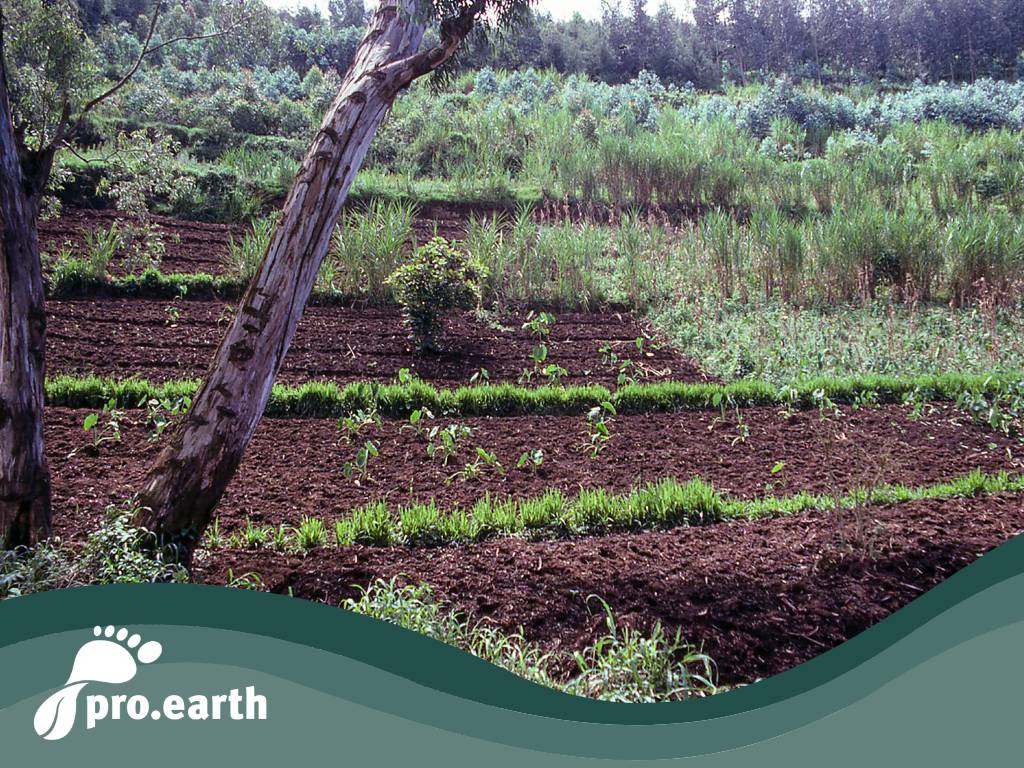Promising model for the future - agroforestry

Agroforestry means combining woody plants (trees and shrubs) with arable crops or grassland on an area in a way that benefits nature, the climate and your wallet. This cultivation method sounds very modern, but it used to be quite normal in many cultures. Here too. Orchard meadows are just as much a part of this form of farming as hay forests (e.g. acorn fattening with pigs). This form of cultivation slowly disappeared in the 19th century.
Climate change and species extinction are bringing this form of cultivation back into focus. However, modern agroforestry systems differ from the old ones in that they are adapted to current agricultural production technology. The aim is for agricultural use to be impaired as little as possible by the trees, so that economically competitive production of animal, arable and forestry products is possible.
"If we don't solve the challenges of climate, water, soil and species protection, who will?" Farmer Sepp Braun, father of four daughters, wants his fields to be "just as fertile as natural forest soils, which have been growing an incredible amount of biomass for thousands of years without human intervention".
The Freising-based organic farmer Josef Braun is also convinced that it is worth overcoming the "artificial separation of forestry, agriculture and horticulture that we humans have created and developing networked systems".
Advantages of agroforestry
Mixed cultivation helps to improve the soil, retains more precipitation on the land, provides better protection against wind and the degradation of the humus layer through compaction and increases biodiversity on the land. This system also makes a significant contribution to climate protection, as considerable amounts of CO2 are bound in the wood of the trees and shrubs. This binding is particularly long-lasting in the case of timber and fruit trees.
Soil improves
The different plants create a more interconnected nutrient cycle. This, together with leaf fall and penetration by roots of different depths, leads to better soil life and the formation of a larger humus layer. The roots act as a water and nutrient pump. Trees also remove pollutants from the soil, as studies in an agroforestry system have shown, in which the average nitrate concentration in the groundwater under poplar strips was more than 120 times lower than under arable crops.
Groundwater is stored
These areas also keep the water on the land for much longer. According to ökolandbau.de, tests at the Brandenburg University of Technology Cottbus-Senftenberg have shown that 20 to 25 percent less water evaporates from an area planted with winter barley and tree strips than from a comparable area without trees, which benefits the winter barley. This is because the trees shade the ground and noticeably reduce higher wind speeds in particular.
Microclimate changes
The canopy of trees and shrubs creates a windbreak that prevents soil erosion. This and the cooling shade create a new microclimate on the land.
Higher yields on a smaller area
In the Brandenburg trials, the yield of winter barley was also measured and found to be higher: 6.2 tons of barley per hectare could be harvested on the agroforestry area, compared to only 5.7 tons per hectare on the treeless comparison area. However, the tree population reduces the arable area:
"Our arable area in the agroforestry system was around 17 percent smaller than the treeless comparison area due to the trees, but only yielded nine percent less barley. If we add the wood yield of the agroforestry area for a comparison of the area productivity, the total productivity in the agroforestry system is around ten percent higher," summarizes soil scientist Dr. Christian Böhm from the University of Cottbus.
What are the disadvantages of the system?
The establishment and management of agroforestry systems is generally associated with higher costs than pure arable farming systems and the amount of work involved is usually greater.
Furthermore, the slow-growing woody plants lead to a long-term commitment of capital and land, which many consider to be a disadvantage.
Ultimately, however, it is above all the fact that farms have not yet received any state subsidies for land used in this way - as they have for conventional arable land.
Eligible from 2023
From 2023, agroforestry areas in Germany will also be eligible for funding. According to the German strategic plan for the EU Common Agricultural Policy (CAP), around 200,000 hectares of agroforestry areas are to be created by 2027.
Agrarheute.com writes: "However, the EU funding as an eco-scheme of a mere 60 euros/ha is subject to bureaucratic conditions. These include a minimum distance of 20 m between the agroforestry strips and the edge of the land, as well as a minimum width of 3 m with two strips per area. (...) With an average of 10 to 20 percent of the wooded areas on arable land or grassland, this leaves just 6 to 12 euros/ha in EU funding. However, some federal states also support agroforestry from the so-called second pillar."
Here you can find an overview of the situation in Austria.
Further links
German Association for Agroforestry






